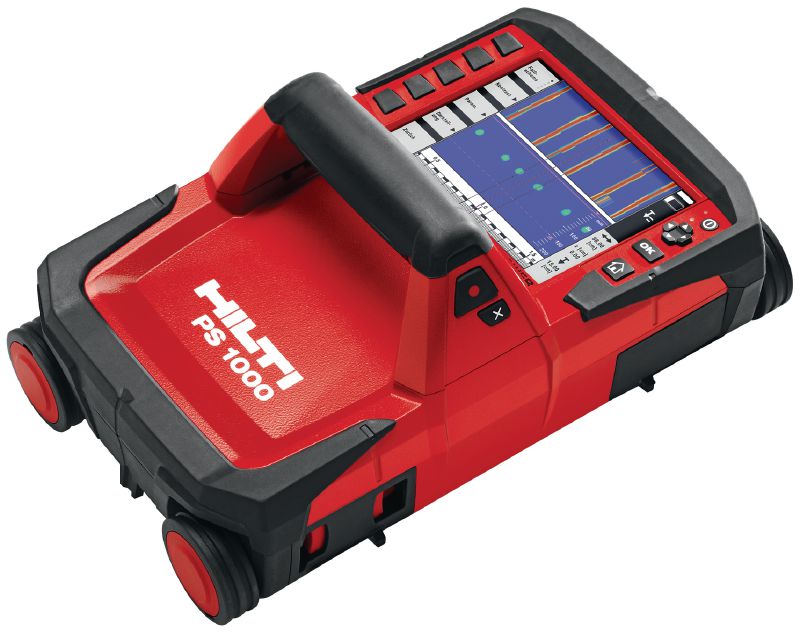Discovering the Trick Benefits of Concrete Scanning in Construction Projects
In the realm of modern-day building and construction practices, the usage of concrete scanning innovation has emerged as an essential device for ensuring project effectiveness and structural integrity. From boosting safety and security actions to accurately identifying utilities concealed beneath the surface, the advantages of concrete scanning are multifaceted. RainierGPR Concrete Scanning.
Improved Safety Measures
Utilizing sophisticated concrete scanning modern technology boosts safety steps on construction sites by giving accurate discovery of prospective threats hidden below the surface area. This modern technology allows building groups to identify rebar, conduits, post-tension cable televisions, and various other obstructions before excavation or boring, significantly lowering the threat of mishaps. By pinpointing these aspects exactly, workers can prevent damaging crucial architectural parts, thus protecting against injuries, hold-ups, and expensive repairs.
Additionally, concrete scanning plays a crucial duty in making sure the stability of existing structures during remodellings or growths. By finding weak points, gaps, or damage within concrete aspects, engineers can deal with these issues proactively, enhancing the general safety and security and longevity of the building. This aggressive approach not only alleviates the threat of architectural failings yet additionally minimizes the potential for crashes brought on by unexpected structural deficiencies.
Essentially, the application of concrete scanning modern technology offers as an aggressive safety and security action that safeguards both construction employees and the architectural integrity of structures, inevitably contributing to the total success and effectiveness of building projects. - RainierGPR Concrete Scanning
Accurate Discovery of Energies
Concrete scanning technology facilitates precise recognition of below ground utilities, improving building site safety and performance. Precise detection of utilities is crucial in construction projects to stop costly problems, task delays, and most notably, make sure the security of employees and the public. By using sophisticated scanning technologies such as ground-penetrating radar (GPR) and electro-magnetic induction, construction teams can draw up the area of buried pipes, wires, and other energies with high degrees of accuracy.

Time and Price Performance

Concrete scanning innovation allows construction groups to accurately situate rebar, post-tension cords, and other embedded items within concrete frameworks. This specific info helps in preventing costly errors such as unexpected damages to essential elements throughout drilling, reducing, or coring tasks. Additionally, by recognizing potential threats in advance, the need for pricey repairs or rework because of damages can be lessened, causing cost financial savings for the job.
Moreover, the ability to promptly and properly identify energies under the surface without triggering any damage not just saves time yet additionally prevents costly disturbances to existing framework. On the whole, the time and price efficiency advantages of concrete scanning make it an invaluable tool for boosting building and construction task monitoring and implementation.
Conservation of Architectural Stability
Preserving the architectural integrity of buildings and infrastructure is critical in making certain long-lasting security and safety. Concrete scanning plays a crucial role in this conservation process by enabling construction professionals to recognize prospective threats to the architectural honesty of a building or framework prior to they escalate right into major problems. Through the usage of advanced scanning modern technologies such as ground-penetrating radar (GPR) and electromagnetic induction, building teams can non-invasively examine the problem of concrete frameworks, situate rebar, post-tension cable televisions, and various other ingrained aspects, and recognize any type of voids, splits, or damage within the concrete.
Improved Project Preparation
In order to make sure the successful execution of construction jobs, careful interest to information and complete preparation are important components that originate from an extensive understanding of the structural problems identified with concrete scanning. Improved job preparation, facilitated by concrete scanning, enables building and construction teams to preemptively address prospective obstacles, allocate resources extra efficiently, and establish sensible timelines. By accurately identifying the area of rebar, post-tension cable televisions, and various other ingrained things within concrete structures, project managers can create a lot more specific building plans that lessen the threat of pricey errors or delays. Furthermore, the data obtained from concrete scanning allows stakeholders to make educated choices pertaining to architectural alterations, remodellings, or growths, causing smoother task transitions and improved general job click here to find out more results. Eventually, integrating concrete scanning into the job planning phase improves control amongst staff member, promotes positive analytical, and adds to the effective delivery of construction tasks within spending plan and timetable restraints.
Conclusion
To conclude, concrete scanning supplies many advantages in building and construction jobs. By enhancing precaution, accurately detecting energies, improving time and expense efficiency, protecting structural honesty, and aiding in task planning, concrete scanning confirms to be a necessary tool for successful task execution. Its capacity to mitigate threats, enhance efficiency, and make certain job stability makes it an essential property for building professionals.
In the world of modern-day construction techniques, the usage of concrete scanning modern technology has actually arised as an essential device for ensuring job performance and architectural integrity.Concrete scanning innovation makes it possible for construction groups to precisely situate rebar, post-tension wires, and other embedded items within concrete frameworks. Via the usage of advanced scanning innovations such as ground-penetrating radar (GPR) and electro-magnetic induction, building and construction teams can non-invasively evaluate the problem of concrete structures, locate rebar, post-tension cable televisions, and various other ingrained components, and determine any kind of gaps, cracks, or deterioration within the concrete.
In order to make sure the effective implementation of building and construction projects, precise that site attention to detail and extensive planning are essential parts that stem from an extensive understanding of the structural conditions identified through concrete scanning. Ultimately, incorporating concrete scanning into the task preparation stage boosts control amongst group members, fosters proactive problem-solving, useful link and adds to the effective shipment of building jobs within budget plan and routine constraints.